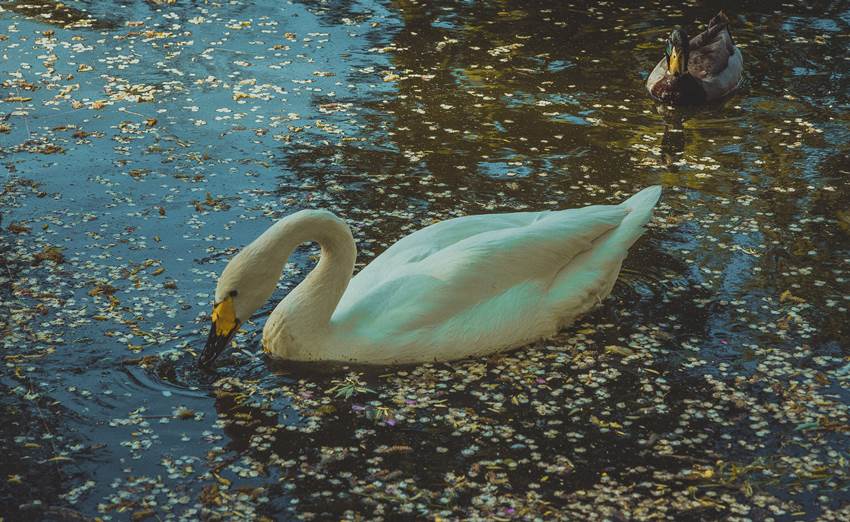Chinese Name: 北京动物园 Pronunciation: běi jīng dòng wù yuán
Building Time: 1906
Best Visiting Season: All seasons
Recommended Time for Visit: 2-4 Hours
Occupied Area: About 0.9 million square meters
Address: No.137 Xizhimenwai Street, Xicheng District, Beijing, China
Building Function: A place for people to see and learn about animals and a place to study the advanced techniques for the breeding and management of animals and plants.
|
Tickets
|
Peak Season
(April 1st to October 31st) |
Low Season
(November 1st to March 31st) |
| Admission Fee | 15 yuan | 10 yuan |
| Joint Ticket (including the admission fee and Panda Hall) |
19 yuan | 14 yuan |
| Sightseeing Bus | 10 yuan | |
1. Children under 6 years old or 1.2 meters are free of charge.
2. Senior citizens over 60 years old(with an ID card or passport) are free of charge.
* The above policy applies to the ticket fare except for the fare of sightseeing car.
*Please change the ticket with a valid ID card or passport at the ticket counter.
|
Opening Hours
|
Peak Season
(April 1st to October 31st)
|
Low Season
(November 1st to March 31st)
|
| Beijing Zoo gate | 7:30-18:00 | 7:30-17:00 |
| Beijing Aquarium | 9:00-17:30 | 10:00-16:30 |
| Ticket Office Opening Hours | 9:00-16:30 | 10:00-15:30 |
| No Entry | After 17:00 | After 16:00 |
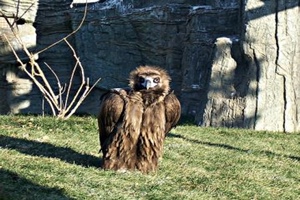
Beijing Zoo, located in Xizhi gate outer street and adjacent to the Beijing Exhibition Hall and the Moscow Restaurant to the east. It is the biggest and the very first one open to the public in China with a wide variety of animals, a diverse collection of plants and a lot of historical sites. Covering an area of 0.9 million square meters, Beijing Zoo is divided into three parts, the east area, the west area and the north area.
There are 5000 species of animals in total including 500 species of land animals. The particularly appealing attractions are Chinese native animals, many of which are precious and rare, like giant pandas, Siberian tigers and golden monkeys which are the first-class protected animals. Also, hundreds of endemic species from other countries, such as the polar bears, American bison and zebras, draw thousands of visitors from every corner of the world as well.
As a national key park, Beijing Zoo is regarded as a name card of Beijing to show China’s image. In the Beijing Zoo, you can not only enjoy yourself with animals but also acquire a wide range of knowledge about animals, nature and history. If you love animals and want to learn more about them, Beijing Zoo is the first choice!
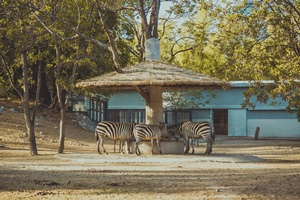
In 1906, to revitalize agriculture, the Qing government set up an Agricultural Experiment Station, which was called Wansheng Garden (the Garden of 10000 animals). It was developed into the Beijing Zoo later. Covering an area of 0.71 square meters, the garden with lots of fine buildings was mainly used for breeding and testing various crops. At that time, only 1.5 thousand square meters belonged to the zoo.
In 1908, the garden was completed and began to open to visitors. Featured as the first park with both animals and plants and convenient transportation, it had a high flow of visitors every day. Even the Emperor Guangxu and Empress Dowager Cixi visited the garden twice. The name of Wansheng Garden soon spread rapidly across Beijing.
During the Anti-Japanese War, the park was damaged and most of the animals died from various causes.
In 1949, it was renamed Western Suburb Park and opened in 1950. Much attention was paid to the enlargement of the park and the systematic breeding and management of animals.
In 1955, the park was renamed Beijing Zoo, whose plaque was inscribed by Guo Moruo, a famous modern Chinese scholar. Giant pandas were shown to visitors for the first time then.
In the 1960s, animal exchange with domestic and international zoos was frequent and a series of foreign rare animals, such as wild camel, orangutan and so on, were shown for the first time.
In 1978, the first giant panda bred by artificial sperm collection and artificial insemination was born.
In the 1980s, after China’s reform and opening up, Beijing Zoo developed rapidly. Lots of halls were built, among which the Panda Hall became one of the landmark buildings of Beijing Zoo. At this stage, its captive breeding technology of rare animals like pandas and crested ibis kept ahead in the world.
In the 1990s, Beijing Zoo was expanded northward. Beijing Aquarium was built.
In 2004, Beijing Zoo, the Chinese Animal Society and other several organizations jointly launched an opening call for volunteers to provide guide service for visitors. Beijing Zoo is currently the first one and the only one that provides such a service in mainland China.
In 2016, Beijing Zoo set up “a sperm bank” of rare animals.
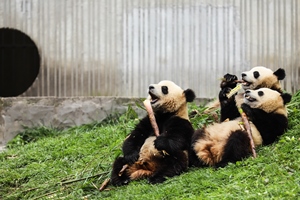
Located in the east area of the Beijing Zoo, Panda Hall is a place that you can not miss! Giant pandas, considered as a “living fossil” and a national treasure of China, are adored by people everywhere, often enjoying VIP privileges wherever they are. With a cute look and an air of charming naivety, the panda is often the most popular star in the zoo and becomes one of the most commonly used mascot images in many festivals.
The Panda Hall, as the most visited place in the zoo, was built in 1989 with an area of 10000 square meters. Characterized by its ingenious conception, novel shape and reasonable layout, it is honored as one of the top ten buildings in Beijing. Every hall in the zoo has its features. Surrounded by plenty of bamboos, there are a great number of green plants both in the outdoor courtyard and the indoor exhibition rooms, which is similar to the wild habitat of pandas to make sure their comfortable living in the zoo. In the meanwhile, it makes visitors feel like they are in a real panda’s world.
Beijing Aquarium
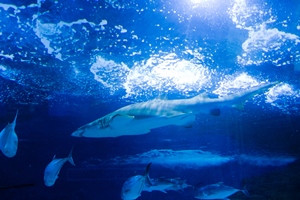
Another most popular and memorable attraction in the Beijing Zoo is Beijing Aquarium, which is called the biggest inland aquarium in the world. Beijing Aquarium situated in the north area of the zoo, covering about 12000 square meters. It is a modern and advanced science museum with a set of science education and viewing entertainment in one.
The aquarium is built in a unique and magnificent style, just like a big blue conch, lying on the beach surrounded by green trees and flowers. Such a bright blue world always can catch visitors’ eyes as soon as possible. There are more than a thousand kinds of marine creatures, in which you can see almost any marine life you want to see, such as jellyfish, manta rays and man-eating fishes.
The hall consists of several zones with different topics: the Hall of the Shark, the Hall of Tropical Rain Forest, the Hall of the Chinese Sturgeon and so on. You may feel you are in the undersea world when walking in the special subsea channel. Besides, what visitors are most interested in are the enjoyable sea animal shows performed by the dolphins, seals and sea lions, which will give you an unforgettable trip.
Gorilla Hall
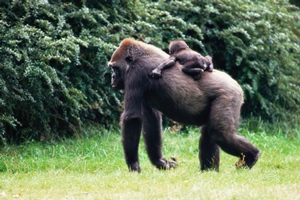
On the west side of the zoo, the gorilla hall was built in 1987 with 8000 square meters. The hall greatly presents a wild living environment of the gorilla. The background of all rooms is murals of a gorilla living in the wild and some stone mountains are put in the rooms for a gorilla to do their daily activities.
Plenty of great trees and abundant clumps of bushes are planted in the exhibition area to make sure that animals living here can have an environment as free and comfortable as they do in the wild. Also, the glass of the exhibition area is made of composite glass with a thickness of 34mm, which provides visitors with an excellent viewing effect on the premise of ensuring safety.
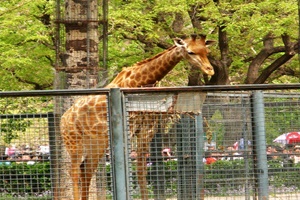
The giraffe hall is another most recommended attraction. Due to the features of giraffes, this hall owns the reputation for the tallest structure in the west area with a peak of 8.9 meters, which can be seen from a distance. It stands out from the others with its European architectural style as well.
Under the guidance of keepers, visitors can have the experience to feed giraffes. In addition to keeping giraffes, there are also some goats and rabbits, which not only enriches the animal living environment but also meets the needs of tourists.
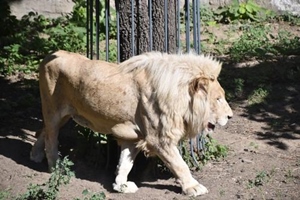
Lion and tiger hall built in1956, is one of the landmark buildings of the Beijing Zoo. In an era when cameras were a luxury commodity in China, most of the visitors took their souvenir pictures with the lion and tiger hall in the background. The hall features a particular design with mysterious caves that people can enter to experience the distinctive living environment of lions and tigers.
In 2009, a bronze statue of a tiger was erected on the north side of the hall, which was created over two years by Yuan Xikun, a very famous Chinese sculptor. It is the first large animal sculpture in Beijing Zoo, with 19.48 meters in length, 9.18 meters in height and 30 tons in weight.
Chang Guan Building
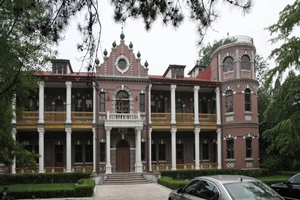
Except for a great number of precious animals that can be seen, there are some sight-worthy historical sites in the zoo. Completed in 1908, Chang Guan Building is a European baroque-style building which is one of the palaces for the imperial family of the Qing Dynasty.
Chang Guan Building is surrounded by water and trees, in which the furnishings and appliances are mainly western styles. Sun Yat-sen (1866-1925), the forerunner of the 1911 Revolution, lived in Chang Guan Building when he came to Beijing. After the foundation of the People’s Republic of China, it is the place where the first planning scheme of Beijing was born. It is a pity that it is not opening to visitors after the 1990s.
Lamarck Hall
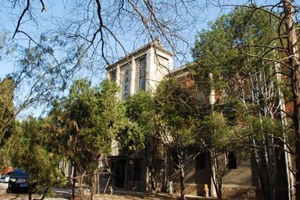
Lamarck Hall was built in the 1930s in honor of the famous French biologist Lamarck. As the earliest botany scientific research building in China, it was once the Chinese Botanical Research Base, including three floors---the laboratory, the library and the herbarium. In 1949, the Institute of Phytotaxa of the Chinese Academy of Sciences was established here. In 1953, it was renamed the Institute of Botany, Chinese Academy of Sciences.
Song Jiaoren Memorial Tower
This tower is dedicated to Song Jiaoren’s memory after he was assassinated in 1913. Song(1882-1913) was one of the first generation leaders of Kuomintang. The tower is situated in the north of Chang Chun Hall, where Song once lived.
a. Enter from South Gate of the Zoo→Pheasant Hall→Giant Panda Hall→Waterfowl Hall→Aviary Hall→Golden Monkey Hall→Giraffe Hall→Apes Hall→Chang Guan Building→Chang Chun Hall→Exit from the Southwest Gate.
b. Enter from South Gate of the Park→Giant Panda Hall→Lion and Tiger Hall→Australian Animals Hall→American Animals Hall→Education and Conservation Center→Giraffe Hall→Children Zoo→Deer Hall→Exit from the Northwest Gate.
c. Enter from North Gate of the Park→Hippo and Rhino Hall→Elephant Hall→Beijing Aquarium→Sightseeing Boat Port→Lion and Tiger Hall→Giant Panda Hall→Exit from the South Gate
South Gate:
Southwest Gate:
Take bus 27, 87, 105, 107, 111, 305, 332, 334, 347, 360, 362, 534, 563, 604, 632, 695, or special line 19 and get off at the Baishiqiao East Station.
North Gate:
By Subway
Take Subway Line 4 and get off at Dongwuyuan (Beijing Zoo) Station. Get out from Exit B.
By Taxi
Chinese: 请带我去北京动物园。English: Please take me to Beijing Zoo.
Chinese: 请带我去北京动物园的南门。English: Please take me to the South Gate of the Beijing Zoo.
Chinese: 请带我去北京动物园的北门。English: Please take me to the North Gate of the Beijing Zoo.
Chinese: 请带我去北京动物园的西南门。English: Please take me to the Southwest Gate of the Beijing Zoo.
Chinese: 请带我去北京动物园的西北门。English: Please take me to the Northwest Gate of the Beijing Zoo.
If you go to Beijing Zoo from the center of Beijing(Tiananmen Square), It takes about 25 minutes(30 yuan).
If you go to Beijing Zoo from the Beijing Capital International Airport, it takes about 35minutes(100 yuan).
If you go to Beijing Zoo from the Beijing Daxing International airport, it takes about 80minutes(200 yuan).
If you go to Beijing Zoo from the Beijing West Train Station, it takes about 25minutes(30 yuan).
